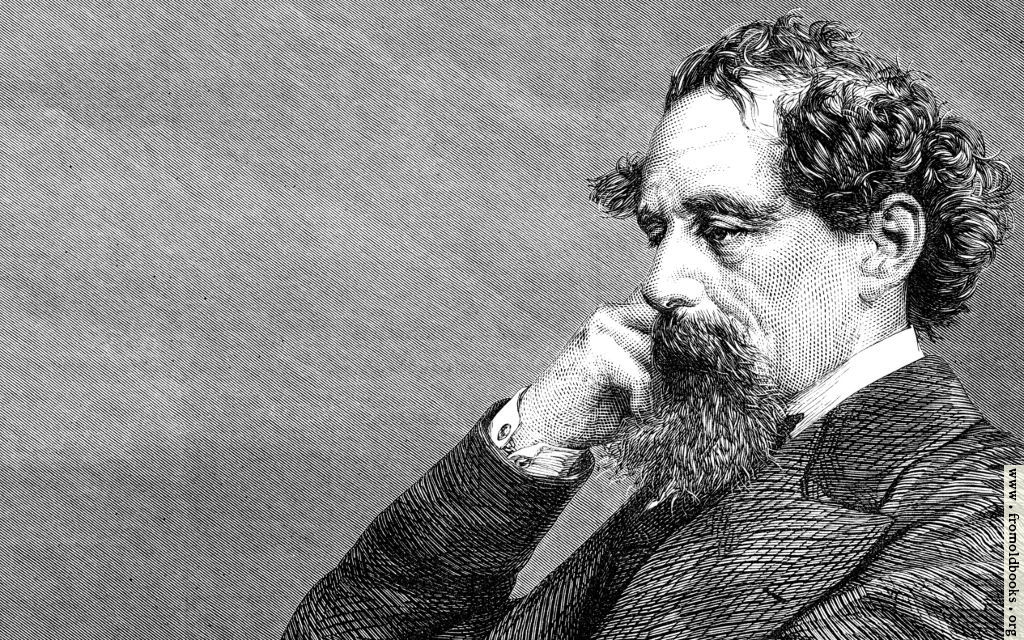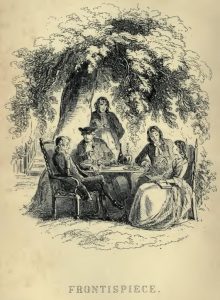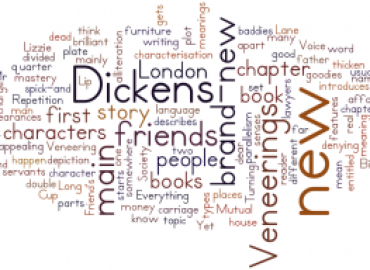Paying homage to British novelist Charles Dickens

We are now updating and revising links so that those students who are currently doing PoppieS Building Block IV can carry out some of the tasks set in one of the Units. Hopefully, it will also serve any others who may want to revise these topics or are just interested in Dickens and his times.
Paying homage to British novelist Charles Dickens, born on a 7th of February in 2012, and to whet your interest in him, in case you need it, here’s a quiz for you with 21 questions on the author:
A quiz for you
- In the year Charles Dickens was born, how many novels were published in Britain and what was the literacy rate?
- What was his father’s job?
- In which towns did he spend his childhood?
- How old was he when his family moved to London?
- What happened to him then?
- How old was Charles Dickens when he started to work as a freelance reporter?
- What happened to him in 1834?
- What pen name did he use when he joined the reporting staff of the Morning Chronicle?
- How old was Charles Dickens when he published his first novel? And when he married?
- Was his first novel published before or after Victoria was crowned queen? How was it published?
- Which novel did Charles Dickens start writing when his first novel was still running?
- How many novels did he publish between his first and 1841? Can you name them?
- What did he do then? Are there any records of it?
- When was his first setback in terms of novel-writing and how did it materialise?
- In which way is David Copperfield different from Dickens’ previous novels?
- What was “Household Words”? What did it have in common with “All the year Round”?
- What were the main topics of Bleak House (1852-3), Hard Times (1854) and Little Dorrit (1855-7)? And those of A tale of two cities (1859), Great Expectations (1860-61) and Our Mutual Friend (1864-5)?
- A tale of two cities is set in 1775 and was published in 1859. How would you relate the last half of the 18th century to the Industrial Revolution? And the first half of the 19th century?
- What was the last novel he wrote? What was it about?
- What was the connection between C. Dickens & Wilkie Collins?
- When did Charles Dickens die?
- How would you use Charles Dickens in class?
Our humble homage to him
Our contribution to commemorate Charles Dickens throughout the year 2012 was the following:
A Tale of Two Cities
In the Preface to the book, dated in November 1859, Charles Dickens wrote:
“When I was acting, with my children and friends, in Mr Wilkie Collins’ drama “The Frozen Deep”, I first conceived the main idea of this story. …. As the idea became familiar to me, it gradually shaped itself into its present form. …Whenever any reference (however slight) is made here to the conditions of the French people before or during the Revolution, it is truly made, on the faith of the most trustworthy witnesses. It has been one of my hopes to add something to the popular and picturesque means of understanding that terrible time, though no one can hope to add anything to the philosophy of Mr Carlyle’s wonderful book”. Indeed, Carlyle’s The French Revolution, published in 1837 was often consulted by Dickens while writing the novel, among other sources.
And here are the opening lines of “A Tale of Two Cities”, a mastery of paradox:
“It was the best of times, it was the worst of times, it was the age of wisdom, it was the age of foolishness, it was the epoch of belief, it was the epoch of incredulity, it was the season of Light, it was the season of Darkness, it was the spring of hope, it was the winter of despair, we had everything before us, we had nothing before us, we were all going direct to heaven, we were all going direct the other way – in short, the period was so far like the present period, that some of its noisiest authorities insisted on its being received, for good or for evil, in the superlative degree of comparison only… It was the year of Our Lord one thousand seven hundred and seventy-five”
Spanish version
Y aquí, con toda humildad, nuestra versión en español:
“Eran los mejores tiempos y eran los peores, era la edad de la sabiduría y la edad de la estupidez, era la época de las creencias y la época de la incredulidad, eran años de Luz y años de Tinieblas, era la primavera de la esperanza y el invierno de la desesperación, lo teníamos todo* y no teníamos nada, íbamos todos directos al Paraíso e íbamos todos directos por el camino contrario; para abreviar, era una época tan similar a la actual que algunos de los expertos que más ruido metían insistían en que sólo se la recibiera, para bien o para mal, en el grado de comparación superlativo … Era el año de gracia de mil setecientos setenta y cinco”.
(* Aquí podríamos también decir “teníamos todo el mundo por delante y no teníamos nada”… pero yo sigo prefiriendo el sincretismo de la versión de arriba. Vernon y yo lo estuvimos discutiendo en su momento, sin llegar a un acuerdo. Si quereis contribuir, o dar vuestra opinión, podéis añadir un comentario.
¿Os suena a algo? Doesn’t it ring bells? and all this published back in 1859 : so topical, so brilliant, so timeless!
And to finish our homage to “A Tale of Two Cities”, just another quote of what Dickens said to his friend and fellow novelist, Wilkie Collins —the author of “The Woman in White” and “The Moonstone” and one of the pioneers of detective stories in the English-speaking world — after he had completed the last pages of the novel:
“It has greatly moved and excited me in the doing and Heavens knows I have done my best and believed in it”.
If you’d like to read the story, click on this Project Gutenberg link and enjoy it!
Once you have considered this and have attempted to answer the questions presented above, you can go to…










[…] we said in our presentation post, POPPIES is a project in the making which aims to put in […]